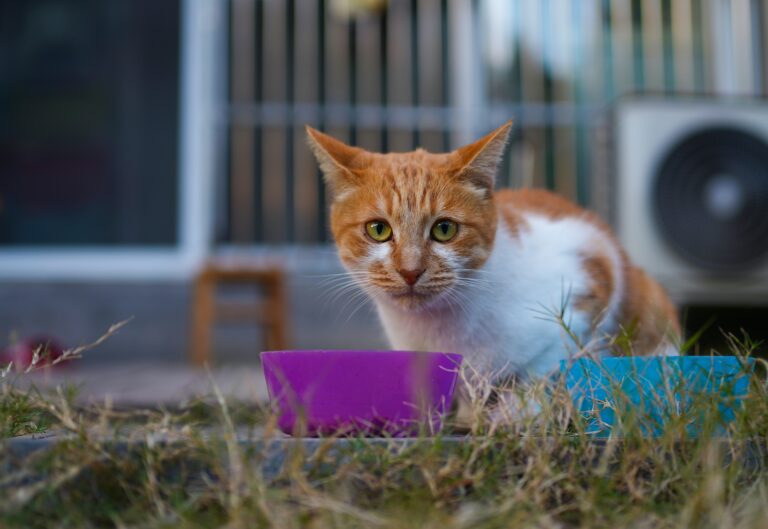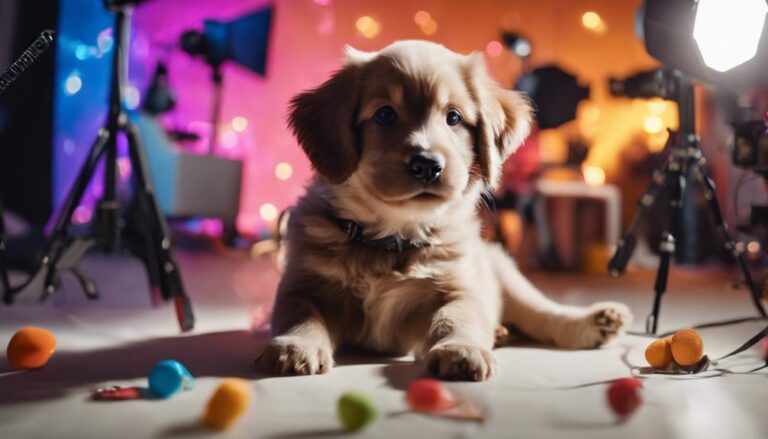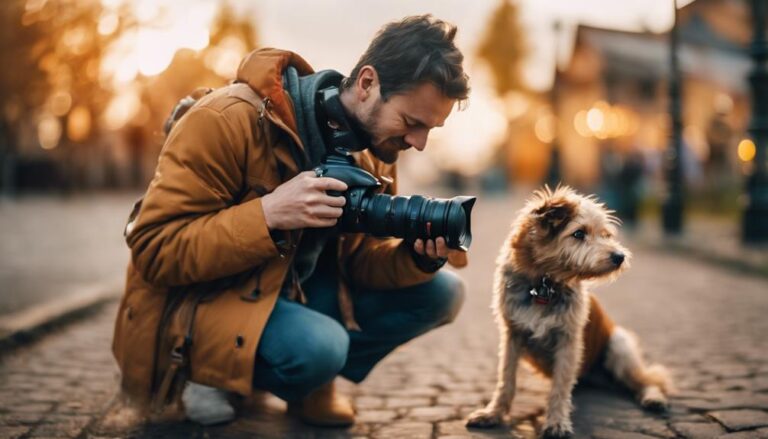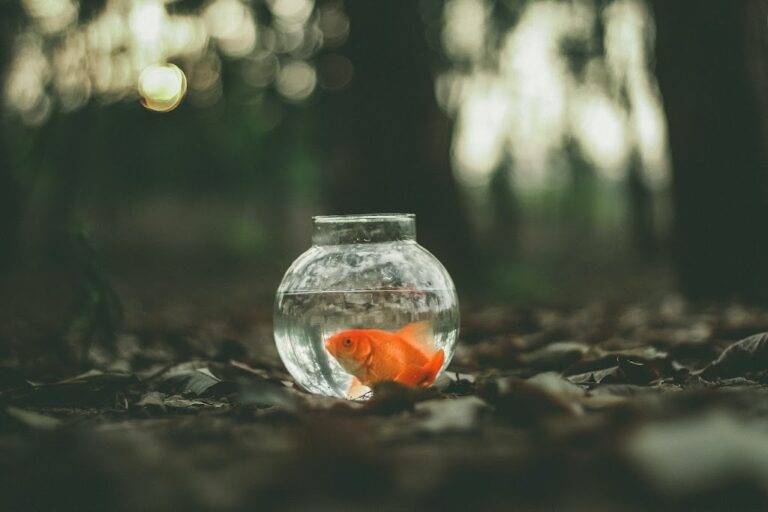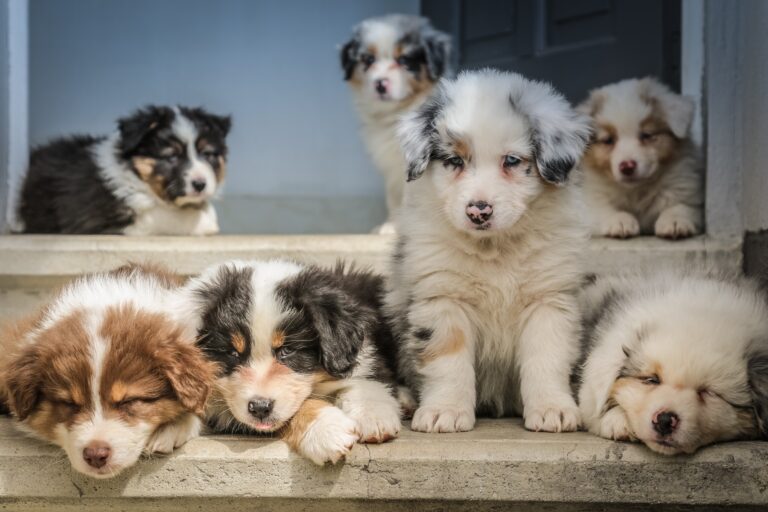Enhance your pet photos with expert composition tips. Use natural light for beautiful fur and eyes. Avoid harsh lighting. Focus on unique pet expressions. Keep backgrounds simple to highlight your pet. Experiment with angles and framing. Place pets at grid intersections for dynamic shots. Guide the viewer's eye with leading lines. Incorporate negative space for balanced composition. Harmonize colors and textures for a visually appealing photo. Create depth using different angles and lighting. Elevate your pet photography with these tips and more.
The Basics of Pet Photography Composition
When aiming to capture captivating pet photos, it is essential to understand the fundamental principles of composition. Lighting techniques play a vital role in pet photography. Natural light is often the best choice as it can bring out the true colors of your pet's fur and eyes. Avoid harsh sunlight and opt for soft, diffused light for a more flattering look. Pay attention to your pet's expressions; capturing their unique personalities in the moment can result in charming and memorable photographs.
Background selection is another key aspect of composition. Choose backgrounds that are simple and inconspicuous to guarantee your pet remains the focal point of the image. Busy backgrounds can distract from the main subject. Consider using neutral colors or textures that complement your pet's features without overpowering them. Framing techniques can also enhance your pet photos. Experiment with different angles and perspectives to add visual interest. Get down to your pet's eye level for a more intimate and engaging shot.
Understanding Rule of Thirds
To create visually appealing and well-balanced pet photographs, understanding the Rule of Thirds is essential. This composition principle involves dividing your image into nine equal parts using two horizontal lines and two vertical lines, creating a grid. The key elements of your photo should align with these grid lines and their intersections to achieve visual balance. Here are some key points to keep in mind when applying the Rule of Thirds to your pet photography:
- Grid Placement: Place your pet at the intersections of the grid or along the grid lines to create a more dynamic composition.
- Visual Balance: By aligning important elements with the grid lines, you can achieve a harmonious balance in your pet photos.
- Focus Points: Position the eyes or the main features of your pet on the grid lines to draw the viewer's attention effectively.
- Background Consideration: Place the horizon or other significant elements in the background along the horizontal grid lines for a well-composed image.
Using Leading Lines Effectively
When framing your pet photos, consider how the direction of leading lines can impact the overall composition. Leading lines can guide the viewer's eye towards your pet, enhancing their presence in the image. Experiment with different angles and perspectives to create dynamic and engaging pet poses.
Line Direction Impact
Utilizing leading lines effectively can greatly enhance the impact of your pet photography compositions. To make the most of this technique, consider the following:
- Angle Variations: Experiment with different angles to create dynamic compositions.
- Lighting Effects: Utilize natural or artificial lighting to add depth and dimension to your photos.
- Background Selection: Choose backgrounds that complement your pet and enhance the overall mood of the image.
- Focal Point Positioning: Place your pet at strategic points within the frame to draw the viewer's eye and create visual interest.
Enhancing Pet Poses
Enhance your pet's poses by strategically incorporating leading lines into your compositions. Utilize creative angles to guide the viewer's focus towards your furry friend, capturing playful expressions that showcase their personality. By incorporating dynamic lighting, you can create depth and dimension in your photos, enhancing the overall visual impact. Look for opportunities to capture candid moments where your pet's natural behavior shines through, adding authenticity to your images. Leading lines can draw attention to specific features or actions, adding interest and guiding the viewer's gaze. Experiment with different perspectives and compositions to find the most enthralling shots that highlight your pet's unique charm.
Importance of Negative Space
When capturing images of your pets, understanding the importance of negative space is essential. By allowing for negative space in your composition, you can create a balanced frame that enhances the focus on your furry subject. This technique helps draw attention to your pet and adds a sense of simplicity and elegance to your photographs.
Balancing the Frame
In pet photography, achieving balance in your frame involves strategically incorporating negative space to highlight your subject. When balancing the frame, remember these key points:
- Symmetry Challenge: Experiment with symmetrical compositions to create visual harmony.
- Visual Weight: Distribute elements in your frame to achieve a balanced visual weight.
- Central Composition: Explore central compositions to draw attention to your pet.
- Rule of Odds: Consider using an odd number of subjects to create a more dynamic and visually appealing image.
Enhancing Subject Focus
To draw attention to your pet and enhance the focus on the subject, strategically utilizing negative space in your composition is key. When capturing your pet, consider incorporating negative space around them to create a visually appealing image. By leaving areas empty around your pet, you allow the viewer's eyes to be drawn directly to your furry friend, emphasizing their presence in the photo. Pay attention to lighting techniques to highlight your pet and make them stand out against the background. Choose backgrounds that are simple and unobtrusive to prevent distractions and maintain focus on your pet. Remember, negative space can be a powerful tool in pet photography composition, helping you create stunning and impactful images.
Balancing Colors and Textures
Achieving a harmonious blend of colors and textures in your pet photography composition can elevate the visual impact of your images. When it comes to pet photography, balancing colors and textures is essential for creating visually appealing and engaging photos. Here are some tips to help you master this aspect of composition:
- Color Harmony: Incorporate colors that complement each other to create a cohesive and visually pleasing image. Consider the color of your pet's fur or accessories and choose backgrounds or props that enhance and harmonize with those colors.
- Texture Contrast: Experiment with combining different textures to add depth and interest to your photos. Mix smooth surfaces with rough textures or shiny elements with matte finishes to create a dynamic composition.
- Use Light to Enhance: Pay attention to how light interacts with colors and textures in your scene. Soft natural light can bring out the richness of colors and highlight the details of various textures.
- Focus on Composition: Think about how colors and textures interact within the frame. Position your pet in a way that allows these elements to complement each other and lead the viewer's eye through the image seamlessly.
Creating Depth and Dimension
To add depth and dimension to your pet photography composition, consider incorporating varying distances and angles in your shots for a more immersive visual experience. When capturing your furry friend, experiment with different lighting techniques to create shadows and highlights that enhance depth perception. Soft, diffused lighting can add a gentle touch, while significant lighting can create dramatic shadows, both contributing to the overall depth of your image.
Framing your pet with elements in the foreground can also help create a sense of depth. For example, you can shoot through a doorway or use overhanging branches to frame your pet, drawing the viewer's eye into the scene. Additionally, adjusting your focal points can make certain areas stand out, further enhancing the perception of depth in your photographs. Try focusing on your pet's eyes to create a compelling focal point that adds dimension to the image.
Experimenting with different angles can also play an important role in creating depth. Get down to your pet's eye level or shoot from a higher vantage point to change the perspective and add visual interest. By combining these lighting techniques, framing tips, and focal point adjustments, you can elevate your pet photography compositions to new levels of depth and dimension.
Frequently Asked Questions
How Can I Train My Pet to Pose for Photos?
To train your pet to pose for photos, use positive reinforcement and treats. Start with short sessions, gradually increasing the duration. Incorporate training techniques like clicker training and practice posing tips to capture adorable shots.
What Equipment Is Essential for Pet Photography Composition Training?
You need essential equipment for pet photography composition training. Lighting techniques and camera settings are vital. Consider pet behavior and training methods. Prepare with proper gear to capture perfect moments with your furry friend.
How Do I Handle Difficult Lighting Situations When Photographing Pets?
When handling challenging lighting situations while photographing pets, be mindful of shadows and reflections. Deal with backlighting by adjusting your angle. For fluorescents, adjust white balance. Practice and experiment to find the best techniques for best results.
Are There Any Specific Editing Techniques That Work Well for Pet Photography Compositions?
When editing pet photography compositions, focus on color correction to enhance the vibrancy of fur and eyes. Use cropping to improve the overall composition. Apply filters subtly for mood and retouch sparingly to maintain the pet's natural beauty.
Can You Provide Tips for Capturing Candid Moments With Pets During a Photo Shoot?
When photographing pets, focus on capturing candid moments to showcase their natural behavior and spontaneity. Emphasize relationship dynamics to bring out genuine emotions in your shots. Stay alert and ready to seize those precious, unscripted moments.
Conclusion
Now that you have learned the basics of pet photography composition, you can confidently capture stunning and engaging photos of your furry friends. Remember to apply the rule of thirds, use leading lines, incorporate negative space, balance colors and textures, and create depth and dimension in your photos. With practice and patience, you will soon be able to create beautiful and professional-looking pet portraits that truly capture the essence of your beloved pets. Keep snapping away!



